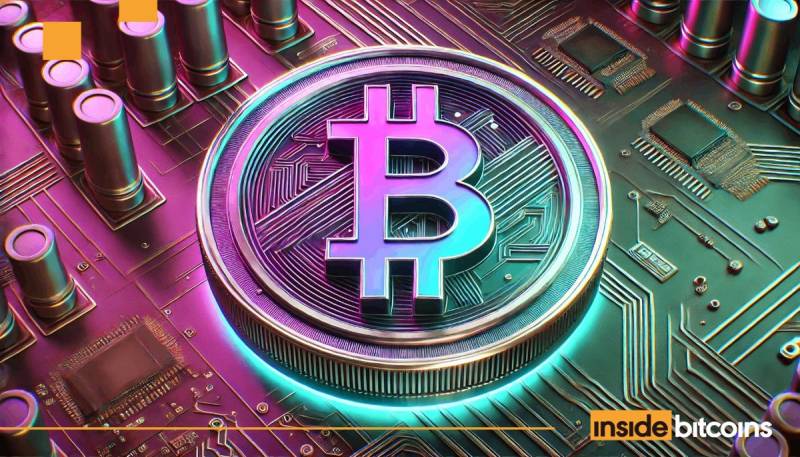 |
|
 |
|
 |
|
 |
|
 |
|
 |
|
 |
|
 |
|
 |
|
 |
|
 |
|
 |
|
 |
|
 |
|
 |
|
Cryptocurrency News Articles
Abstract Crypto: The New Wave of Blockchain Innovation Shaping the Future
Feb 06, 2025 at 07:42 am
Cryptocurrency isn't just about Bitcoin anymore. There's a new wave called 'abstract crypto' that's changing the game. It's about pushing the boundaries of what blockchain can do, from finance to everyday use.
Cryptocurrency isn’t just about Bitcoin anymore. There’s a new wave called ‘abstract crypto’ that’s changing the game. It’s about pushing the boundaries of what blockchain can do, from finance to everyday use. This article will explore how abstract crypto is shaping the future, the challenges it faces, and what it means for you and me.
Key Takeaways
* Abstract crypto is a new way of thinking about blockchain technology, focusing on innovative solutions and ideas that push the boundaries of what’s possible in the world of digital currencies. It’s about making blockchain more accessible, user-friendly, and applicable to a wide range of industries and use cases.
* Quantum computing is advancing rapidly, and its capabilities could pose a threat to the security of blockchain networks. However, researchers and developers are working on quantum-resistant solutions to keep data and transactions safe.
* Decentralized finance (DeFi) is a crucial aspect of abstract crypto, aiming to create a more open, accessible, and transparent financial system. DeFi platforms are enabling people to borrow, lend, trade, and conduct various financial transactions without needing banks or other middlemen.
* Consumer crypto is essential for mainstream adoption of blockchain technology, making it a part of everyday life. It’s about integrating digital currencies and blockchain applications into familiar use cases, such as payments, entertainment, and social interactions.
* The blockchain trilemma poses a challenge in achieving optimal security, scalability, and decentralization simultaneously. However, layer 2 solutions and innovations are emerging to enhance transaction processing capacity without compromising on the core strengths of the blockchain.
* Smart contracts are a key technology in abstract crypto, enabling the creation of new and exciting applications. In abstract crypto, smart contracts are being used to automate processes, eliminate the need for middlemen, and create decentralized autonomous organizations (DAOs).
From Bitcoin to Modern Cryptocurrencies
The journey of cryptocurrencies began with Bitcoin’s launch in 2009. It wasn’t just a new currency; it was a whole new way of thinking about money. Bitcoin introduced the idea of a decentralized ledger, where transactions are verified by network nodes through cryptography. This eliminated the need for a central authority like a bank or government to oversee transactions, creating a trustless and censorship-resistant system.
Over the years, the crypto space has seen a massive explosion of various digital currencies, each with unique features and purposes. Some, like Ethereum, brought smart contracts, enabling programmable transactions. These contracts can automate specific actions or interactions on the blockchain, opening up a world of possibilities for decentralized applications (dApps). Others, like Ripple, focused on fast and cost-effective cross-border payments, aiming to streamline international transactions. The evolution of cryptocurrencies is a testament to the relentless innovation within the blockchain community.
Regulatory Frameworks and Challenges
Regulation has always been a hot topic in the crypto world. Governments around the globe are grappling with how to regulate this new form of currency. On one hand, there’s a need to protect consumers and prevent illegal activities like money laundering. On the other, there’s a desire not to stifle innovation. The challenge lies in finding the right balance.
In the U.S., regulatory bodies like the SEC and CFTC have been actively involved in setting guidelines. They’ve classified different crypto assets and outlined rules for exchanges, brokers, and other entities operating in the space. The SEC has also taken enforcement actions against several companies for violations, including fraud and unregistered securities offerings.
Meanwhile, the European Union is working on a comprehensive framework known as MiCA (Markets in Crypto-Assets). This legislation aims to create a unified regulatory approach across the EU member states. It includes provisions for classifying crypto assets, regulating stablecoins, and establishing licensing requirements for crypto service providers.
Regulatory clarity is crucial for the growth and acceptance of cryptocurrencies. Clear guidelines help legitimize the industry, instill trust among consumers, and attract institutional investors. However, overly restrictive regulations can hinder innovation and drive activities offshore. Striking a balance between consumer protection and fostering technological advancement is paramount.
Emerging Trends in the Crypto Market
The crypto market is always changing, and new trends are constantly emerging. One of the biggest trends right now is the tokenization of real-world assets. This involves creating digital tokens that represent physical assets like real estate or art, making them easier to trade and manage. These tokens can be used to fractionalize ownership of high-value assets, enabling more people to invest in markets that were previously inaccessible.
Another trend is the rise of decentralized finance (DeFi), which aims to recreate traditional financial systems like lending and borrowing on the blockchain. DeFi protocols are built on smart contracts and operate autonomously, offering services without intermediaries. This creates a more open and accessible financial ecosystem. Non-fungible tokens (NFTs) have also gained popularity, offering a new way to own and trade digital art and collectibles. These unique tokens are used to verify authenticity and scarcity in the digital realm.
As we look to the future,
Disclaimer:info@kdj.com
The information provided is not trading advice. kdj.com does not assume any responsibility for any investments made based on the information provided in this article. Cryptocurrencies are highly volatile and it is highly recommended that you invest with caution after thorough research!
If you believe that the content used on this website infringes your copyright, please contact us immediately (info@kdj.com) and we will delete it promptly.
-

-

-

-

- Aethir and QuillAudits Join Forces to Bolster Security and Scalability Across Web3 Ecosystems
- Feb 06, 2025 at 02:26 pm
- This collaboration combines Aethir's advanced distributed cloud infrastructure with QuillAudits' blockchain security expertise to foster innovation in Web3 AI, gaming, and metaverse technologies, while maintaining robust safety standards.
-

-

-

-

-






























































